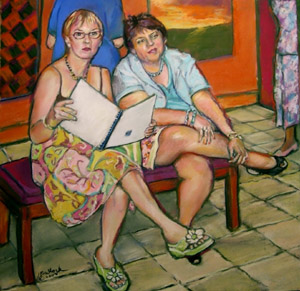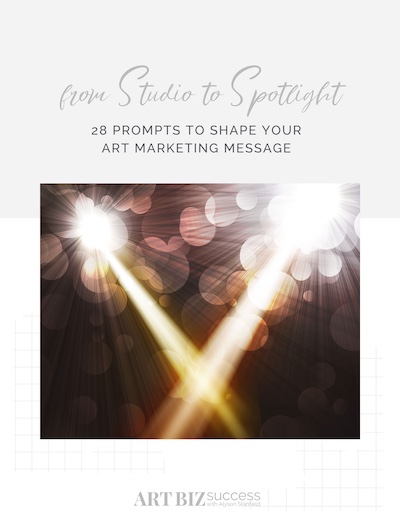You have something you want to tell people, so you quickly throw together an email announcement and push Send. Immediately, you remember the details you forgot to put in your message and are horrified to find errors.
Email is so convenient, cheap, and fast that we forget to consider the consequences when we don’t use it correctly. When you have an important message to share, slow down and get your email blast right. Use these six steps.
 |
| Julia Bullock, The Critics. Pastel on paper, 22 x 22 inches. ©The Artist |
1. Write down what you want to accomplish with your email. What action do you hope people take upon reading your message?
2. List the facts that you need to share in your email. Review the five Ws and one H–Who, What, Where, When, Why, and How–to make sure your message is complete. Don’t forget to include your contact information.
3. Write the body of your message. Use short paragraphs, bullet points, and spacing to ensure that your important points stand out. When including links, be sure to use http:// in front of them to ensure they are clickable in all email programs. Create your text outside of your email program so that you don’t lose it or accidentally send it before it’s ready to go. Even if you are sending an attachment that has your announcement in it (such as a scan of an invitation), you must include text in the body of the email, which encourages people to open the attachment. Never send an attachment without adding the necessary details in the email body. There are too many email programs just waiting to strip your attachments before they arrive.
4. Take a break. Get away from your writing for at least a couple of hours. An overnight delay is even better, although not always practical. Never send a critical email immediately upon writing it. There is too much at stake.
5. With fresh eyes, rewrite and edit your email. Get rid of as many personal pronouns (I, me, my, mine, myself) as possible. Think about a specific person you’re addressing and what you would say to him or her. Use “you” to connect with your reader. (Notice all of the “you”s and “your”s in this newsletter.) If possible, ask someone else to look over your message.
6. Email your message to yourself before you send it to your entire list. This test round is especially vital if you are using HTML in your email. Adding graphics, photos, and other fancy design elements will make your email look great, but only if they’re used properly. Much more can go wrong with HTML messages than with plain or rich text messages. For the test round, I suggest sending these not only to yourself, but also to others using different computers (Mac/PC) and email programs (Mail, Outlook, Entourage, AOL, Gmail).
There’s lots more about email on pages 139-152 of I’d Rather Be in the Studio!
KNOW THIS———-~> Once you press Send, you can’t take your email message back.
THINK ABOUT THIS—~> Have you been taking email for granted?
DO THIS————~> Slow down and get your email blast right. You can only do this by allowing time–by not putting it off until the last minute. If you have an event coming up that you need to announce, write your email blast early, edit it, and test it. It’s worth it! Taking the time to get your email blast right will give you better results.


